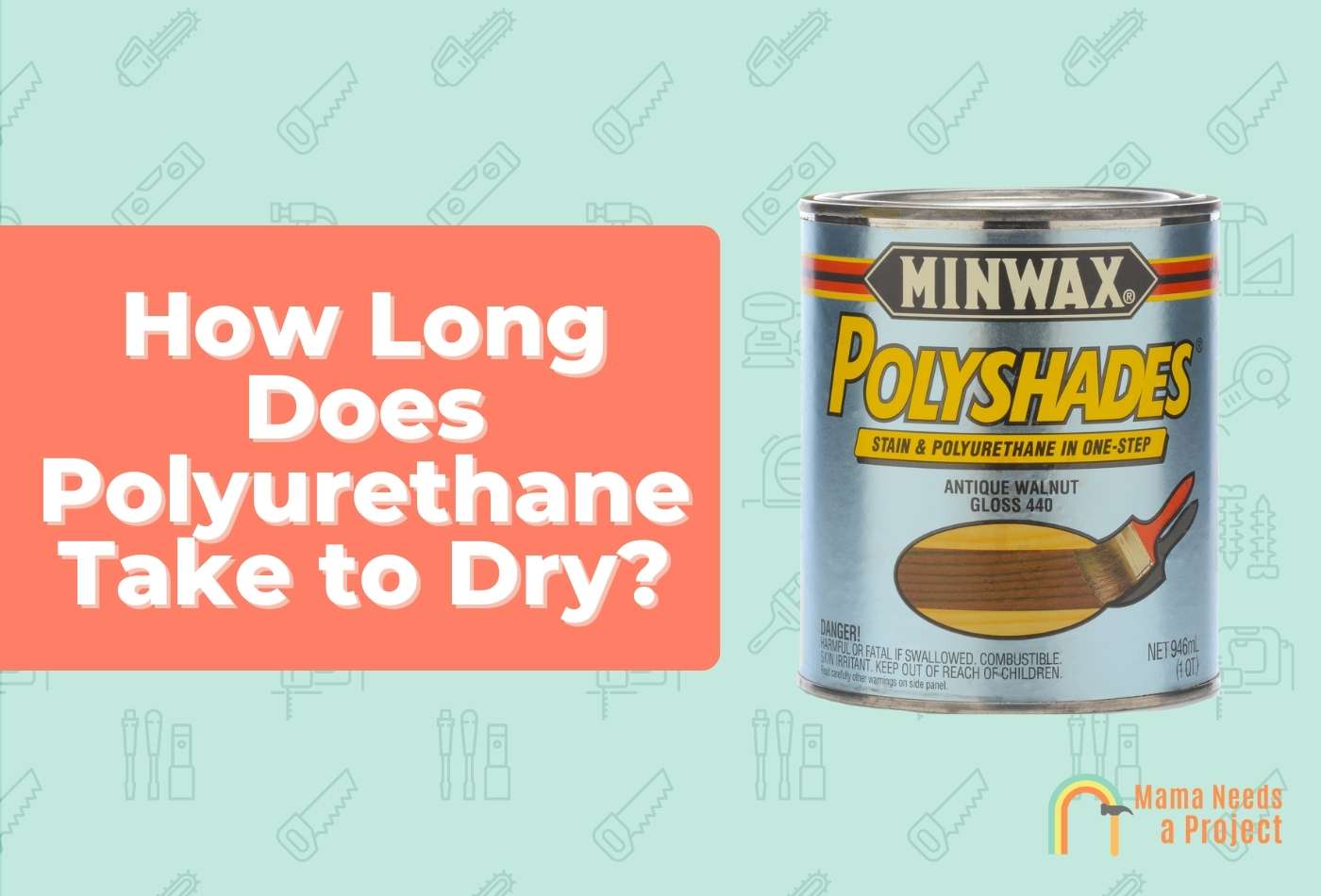(Quick Answer!) How Long Does Polyurethane Take to Dry?
Polyurethane is an extremely popular type of finish used on wood surfaces like flooring, furniture, or countless other wood projects. It’s a great option to increase durability and give your wood the look you want.
When using a polyurethane finish, you might be wondering “how long does polyurethane take to dry?”
In this post, I’ll explore everything about using polyurethane from the drying time to a few tips to help speed up the process. Let’s dig in!
- The drying time for polyurethane can take anywhere from around 24 hours to over 30 days to fully cure. This will depend on the type of polyurethane used, the number of coats, and the environment you’re working in.
- To speed up the process, ensure the area is well ventilated, with a moderate temperature, and add some air flow.
- For a quicker dry – go with a water based polyurethane instead of oil based.
How Long Does Polyurethane Take to Dry?
Below is a chart that shows the average drying time for both water based polyurethane and oil based polyurethane. While there are many other factors that will affect the drying time, these are averages.
| Oil-Based Polyurethane | Water-Based Polyurethane | |
| Additional Coats | 24 Hours | 7.5-8 Hours |
| Completely Dry | 4-5 Days | 24 Hours |
| Completely Cured | 30 Days | 21 Days |
Drying Time Versus Curing Time
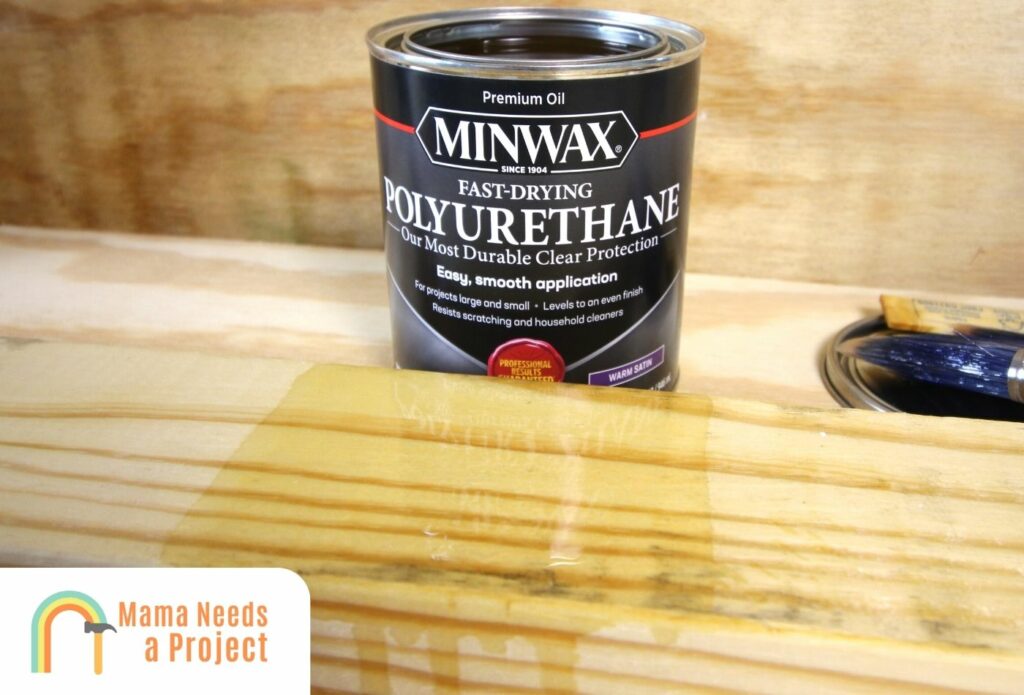
When using polyurethane, there is the drying time and the curing time that you need to keep in mind.
Polyurethane is dry when the surface no longer feels tacky and does not appear to be wet anymore. At this time, you can safely walk on the floor.
The drying time of polyurethane should take about 24 to 48 hours. Walking is the only thing you can do on the floors though as rough treatment can make wrinkles and blemishes on the floor.
You should not move around furniture or set down anything heavy on the floor until it’s completely cured. If you have pets that might run roughly on the floor, you should also keep them away until the floor is cured. Too much pressure on the floors can also cause damage.
The varnish will be completely cured when all the polymer molecules in the polyurethane have chemically reacted with oxygen. This allows the molecules to bind together firmly and will allow less of a chance of wrinkling and damage on your wooden surfaces.
At this point, you can have more than just foot traffic on your floors. The curing process takes about 30 days. So, you will need to be extremely careful around the flooring for about a month.
Don’t forget to clean your polyurethane brushes immediately after using them!
Oil-Based vs Water-Based Polyurethane: Which Should You Use?
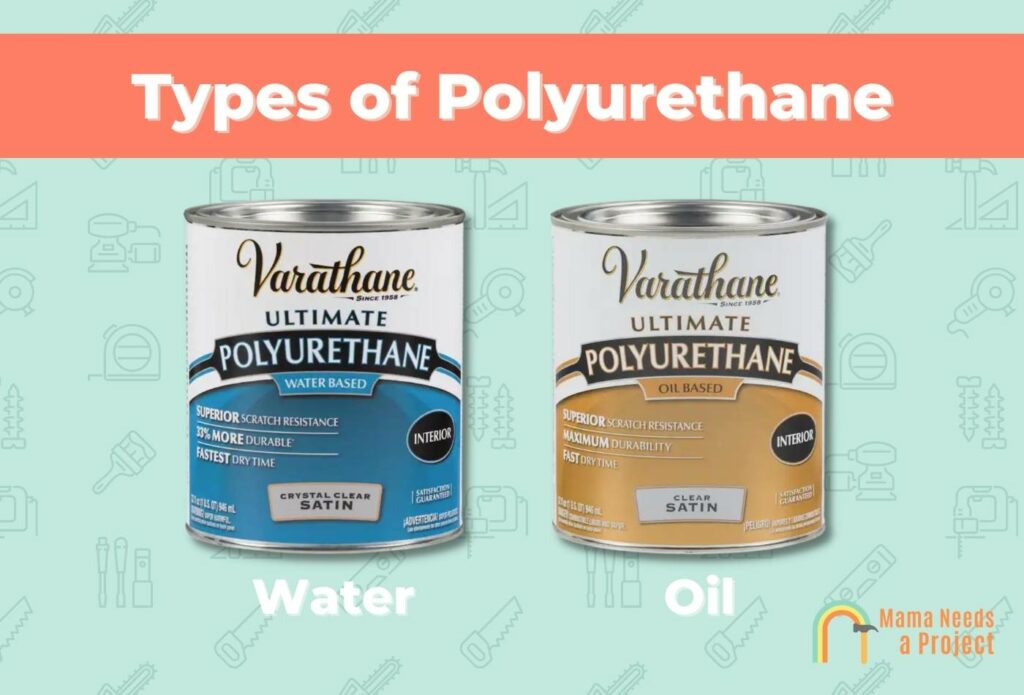
Now that you know how long polyurethane takes to dry, you might be wondering about the factors that affect drying time and if you need to take any of them into consideration.
In simplest terms, polyurethane is basically liquid plastic.
There are both oil-based and water-based polyurethane, so you need to make sure you use the right one for your project.
No matter which varnish you choose, it can be applied one of a few ways:
- Using a rag or cloth – best for simple projects
- Brushing polyurethane – this is the most common method and great for smaller applications
- Rolling polyurethane – this is better for larger surfaces like hardwood floors
- Spraying polyurethane – this is best for medium sized projects
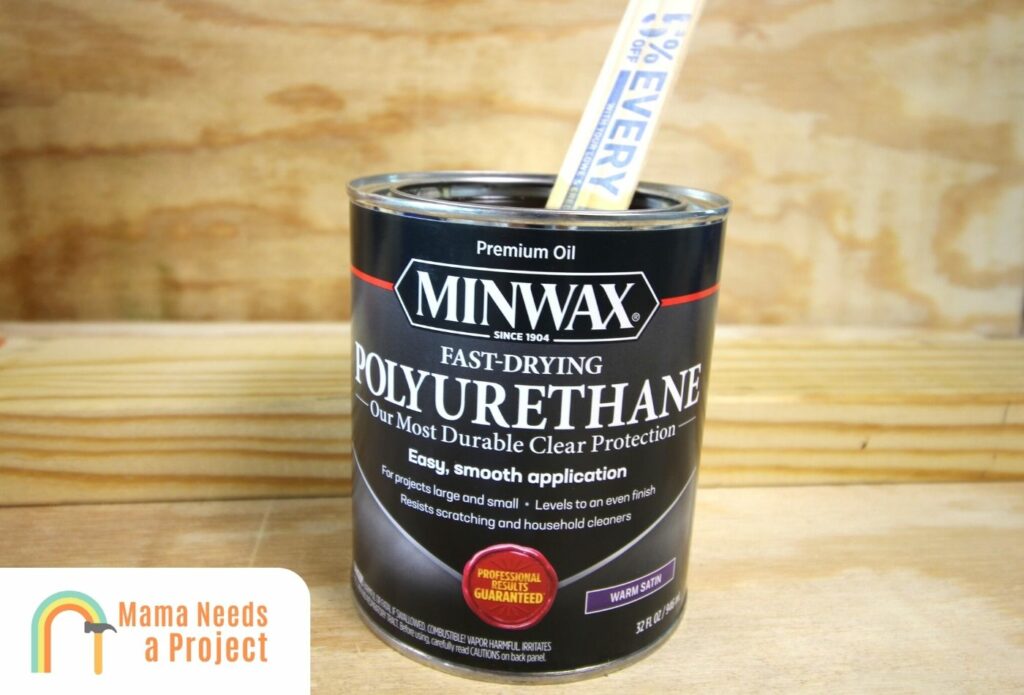
During the drying and curing time, the oil or water will evaporate but the resin will be left behind. The resin will remain, which will leave a varnish coat on the floor.
Water-based polyurethanes dry quicker than oil-based varieties.
It’s also almost completely odorless which some people prefer, especially those sensitive to smells. You can easily clean it with water and it will not start to turn yellow as it ages.
There is a major con of water-based polyurethane, though. It’s usually much less durable in high-traffic areas compared to oil-based ones.
You might start to see damage or other issues on the parts of the floor where there is a large amount of foot traffic.
Oil-based polyurethane finishes take longer to dry, but they are often considered much more durable. Despite the longer times you have to wait for drying and curing, oil-based is the choice for many when it comes to choosing a varnish for the wood surface flooring.
Since there are more chemicals in the oil-based polyurethane, you need to make the room is very well ventilated or someone could become sick from the fumes and smells. Oil-based polyurethane is more resistant to heat, solvents, and moisture.
If your hardwood flooring is going into heavily trafficked areas of the home, you might want to consider oil-based polyurethane because it’s much more durable. Even if there are pets and children running around constantly, you will not have to deal with replacing the floors very often – which I’m all for.
Check out this guide to understand how long it takes polycrylic to dry!
Polyurethane Varnish Sheens
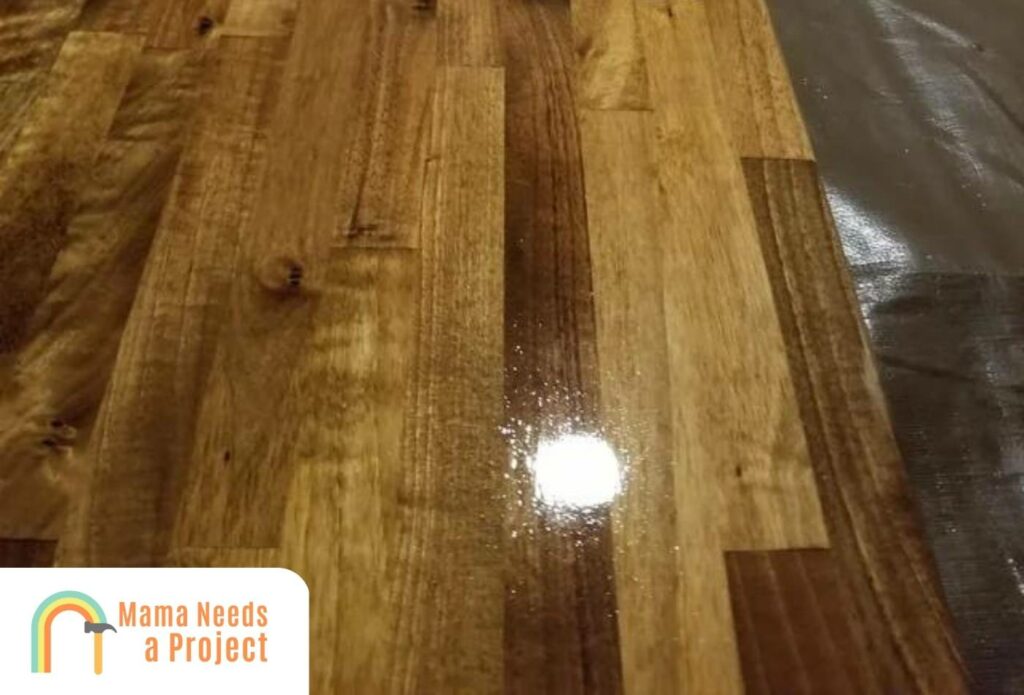
When asking the question “how long does polyurethane take to dry?” you also need to consider the sheen used.
Each of the different sheens also offers different features that you will want to consider before choosing which one you want to go on your hardwood floors.
High Gloss
High gloss polyurethane gives your floors a heavy-duty and shiny appearance. Because of its shiny appearance and the compounds in it that give it this high gloss quality, it will have the longest drying process.
Semi-Gloss
Semi-gloss polyurethane can be found on many different wooden surfaces including cabinets, flooring, doors, and woodworking projects. This varnish gives you a somewhat glossy surface, but it will not be as shiny as the high gloss varnish.
Satin
Satin has the fastest drying process of all the different sheens. It only gives a little bit of shine, but it does provide a subtle shine and a very durable matte surface.
Many people choose the satin sheen when they want a reduce drying time or when they do not want their floors to be too shiny.
Matte
You might see this varnish labeled as matte or flat. It will not have any shine or gloss quality to it. It has a little bit of a shorter drying time compared to the high gloss and semi-gloss finishes.
Check out these differences between satin and gloss polyurethane to find out which is best for your project!
Applying the Polyurethane
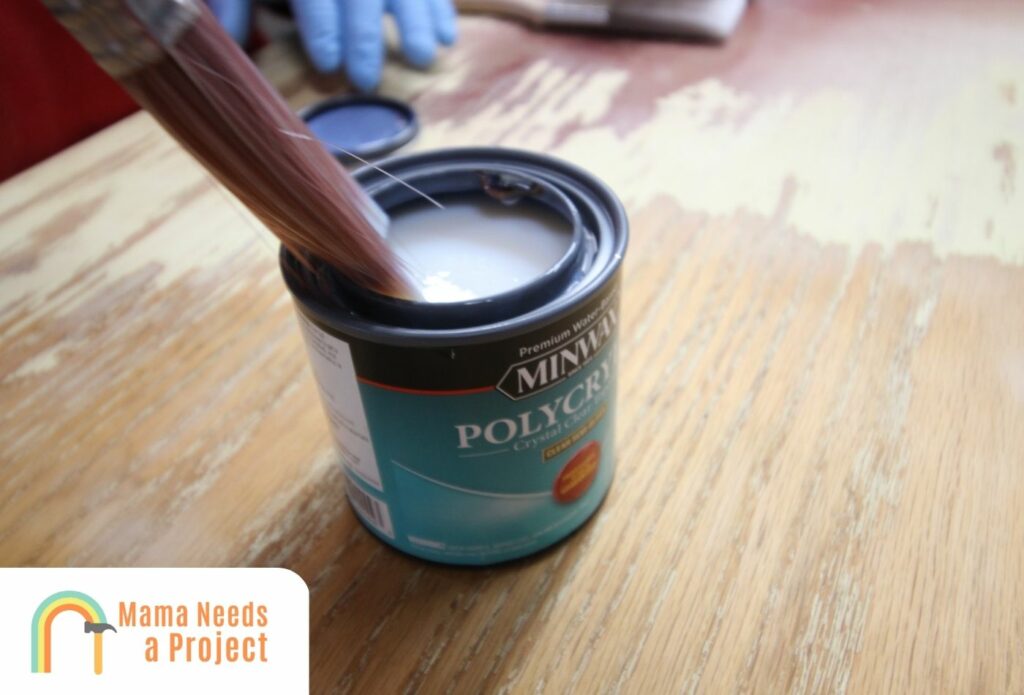
How you apply the polyurethane varnish also affects the drying time as thin layers will often dry much faster than a thicker coat. If you’re ready to apply polyurethane on your projects, check out my list of the best brushes for polyurethane.
The number of coats also matters as some projects will only need a first coat while others will need more.
Before applying coats, make sure the surface is clean so that dirt and debris does not get stuck under the varnish. Make sure to use thin coats and gently brush the varnish onto the wood with a bristle or foam brush.
Allow it to dry completely and then apply the second coat. If you are applying a third coat, make sure the coat before it is completely dry as you don’t want to get tacky and sticky coats.
By following these steps, you can avoid some of the most common polyurethane mistakes.

Check out this comparison between Varathane and Minwax polyurethane!
How Many Coats of Polyurethane Resin are Needed?
Depending on your project, you will need more or less polyurethane coats.
You should at least apply two coats, no matter the project. If the surface is going to be used often, you will want to apply at least three coats.
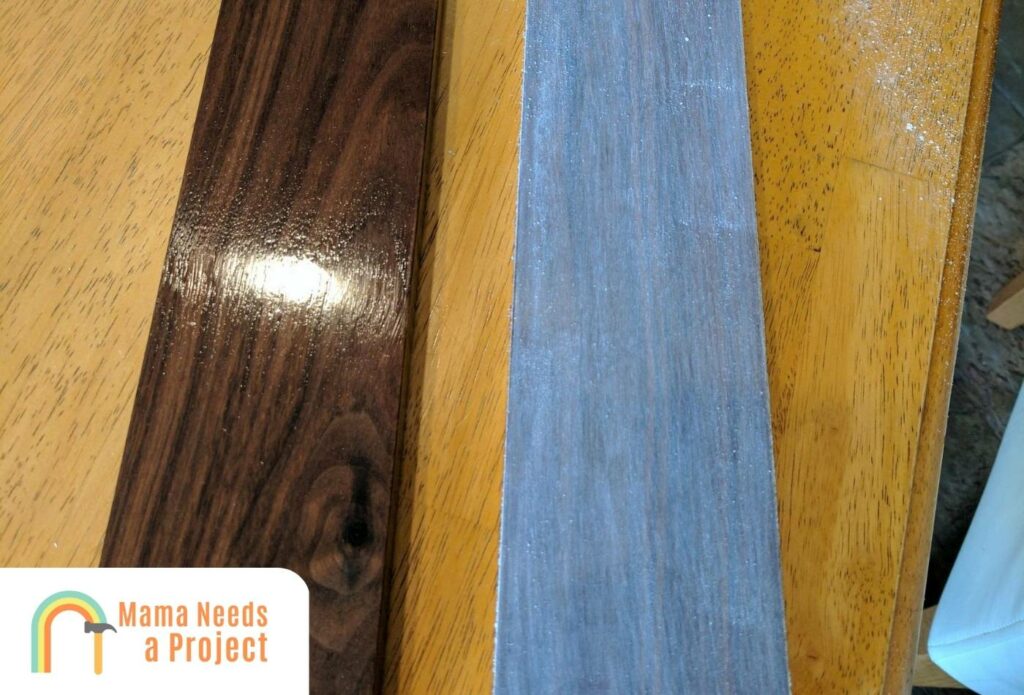
Tables, chairs, and furniture that are going to be used often should also be given three coats. Water-based polyurethane is often given more coats than oil-based poly.
You can even happy four or five coats, especially to places that will see a lot of wear and tear like floors or outdoor furniture.
Factors Affecting Polyurethane Drying Time
The polyurethane cure time and dry time is dependent on many factors. Although water-based polyurethane takes less time to dry than oil-based polyurethane, there are still additional factors to keep in mind.
For example, some brands of polyurethane add-in drying agents that could potentially make an oil-based polyurethane dry quicker.
Other brands also add in natural oils, extra solvents, or stains for coloring. Make sure to check the packaging of the product you have bought to see additional ingredients and how these might affect drying time.
Cleanliness of the Floor or Project
If the floor is not cleaned well before the varnish is applied, it can get stuck under the varnish. Not only does this cause imperfections and makes the end product look poor quality, but it increases the drying time considerably.
Make sure you clean the surface thoroughly before applying a polyurethane finish. If someone else is doing the job for you, make sure you see them clean it before beginning to apply the varnish.
Surface of Wood
There are many different species of wood and they all have different drying times. Raw and sanded wood will always absorb the first coat and dry quickly. Each subsequent coat will take longer to dry.
For example, when applying polyurethane on live edge wood, it might take less time than a traditional piece of lumbar.
Temperature
Hot weather will always allow the polyurethane to dry quicker than if you put the varnish on the floor on a cold and rainy day.
Cold days can even add on an entire extra day of drying time. Keep in mind you need to keep the windows open, so the weather will affect the drying time.
Even if the day is cold, make sure to open the window so you get the proper ventilation. You might also want to consider wearing proper protective equipment on colder days if you don’t open the windows all the way as it can protect you from fumes.
Humidity
High humidity increases drying time and cure time because moisture stays in the air making it harder for the finished surface to dry.
If the humidity outside or inside the home is higher than 50%, you should anticipate a longer drying time. Always check the air temperature and humidity the day you plan to varnish so that you can estimate drying time.
Type of Wood
Just like the surface of the wood, the species of the wood affects drying time. Woods with more oil, like aromatic cedar and rosewood will take longer to dry because the oils do not absorb the polyurethane well.
Number of Coats
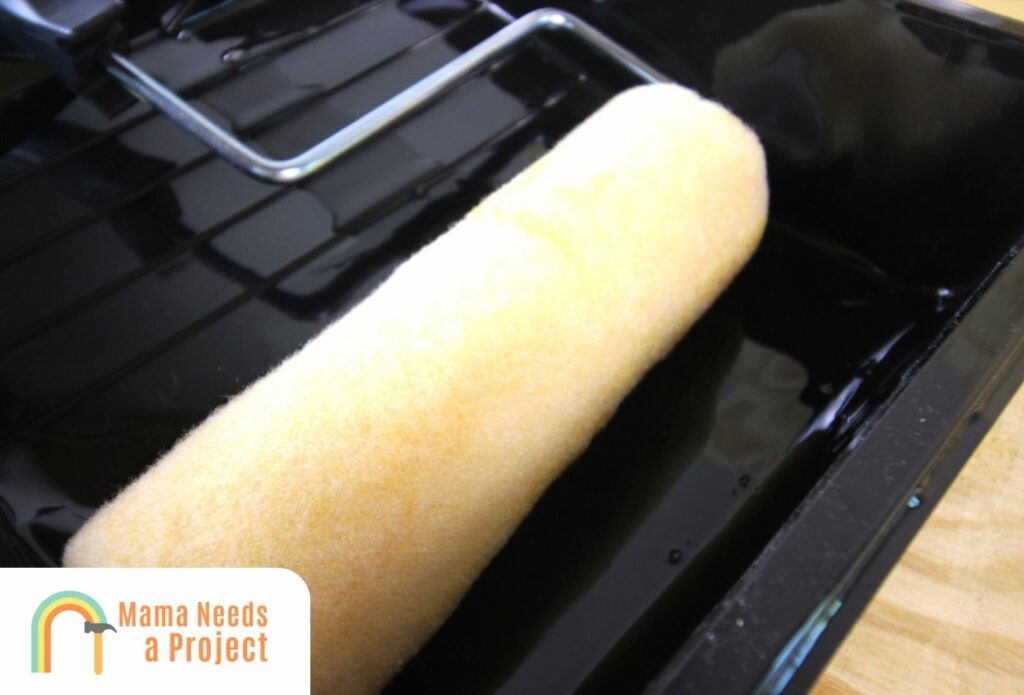
The number of coats you apply will also affect drying time.
The more coats you use, the more drying time you can expect. Remember though that thinner layers always dry quicker so try not to make the coats any thicker than they need to be. If you are adding extra coats on days with higher temperatures, they should still manage to dry quicker.
Curious how much time you should wait in between coats? Check out my guide on how long between coats of polyurethane!
Ventilation
Some people choose to close the windows during the polyurethane application process because they do not want dust or allergens to come in and get stuck in the varnish. This is fine if you are using water-based polyurethane, but not if you are using oil-based polyurethanes.
Oil-based polyurethanes have a very strong smell and have to have proper ventilation. If you want to reduce the drying time though, you should leave the windows open no matter what polyurethane you are using.
You don’t need to worry about dust getting back into the house unless the day is very windy and you live in a dusty area. You can also use a fan in addition to the open windows.
As you can see, there are many different things that affect polyurethane drying time including environmental conditions, the type of wood, and the number of layers you are using. Even though the average drying time is between 24 to 48 hours, you could expect a longer drying phase in certain conditions.
Drying and Curing Time of Water-based Polyurethane
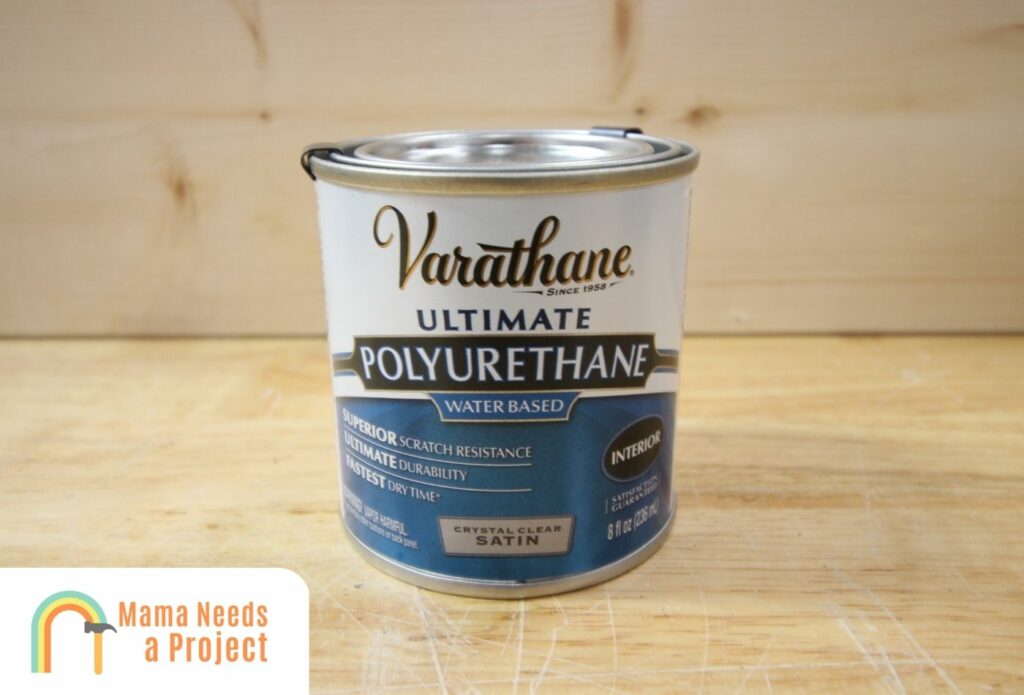
If you have decided to use water-based polyurethane, here are more details on what you can expect as far as drying times and curing times. This should help you better prepare for the job and consider if you need to find another place to stay for a few days while it is drying.
- Full curing time will take 30 days
- The wood should stop feeling tacky after about 6 hours of application. If you need to walk on it, do not wear shoes and do not allow pets to walk on it with you.
- Sanding is okay after 6 hours, but you need to clean it thoroughly before adding a new coat.
- Additional coats can be added after 6 hours of initial application.
- After 24 hours, you can wear shoes on the surface.
- Two days after the application, you can place furniture gently on the floors. Do not slide it around.
- Leave the surface uncovered for 2 weeks. Do not put rugs or carpets on top of the floor.
Wondering about using polyurethane to protect against water? Check out my guide to waterproofing wood with polyurethane!
Drying and Curing Time of Oil-Based Polyurethane
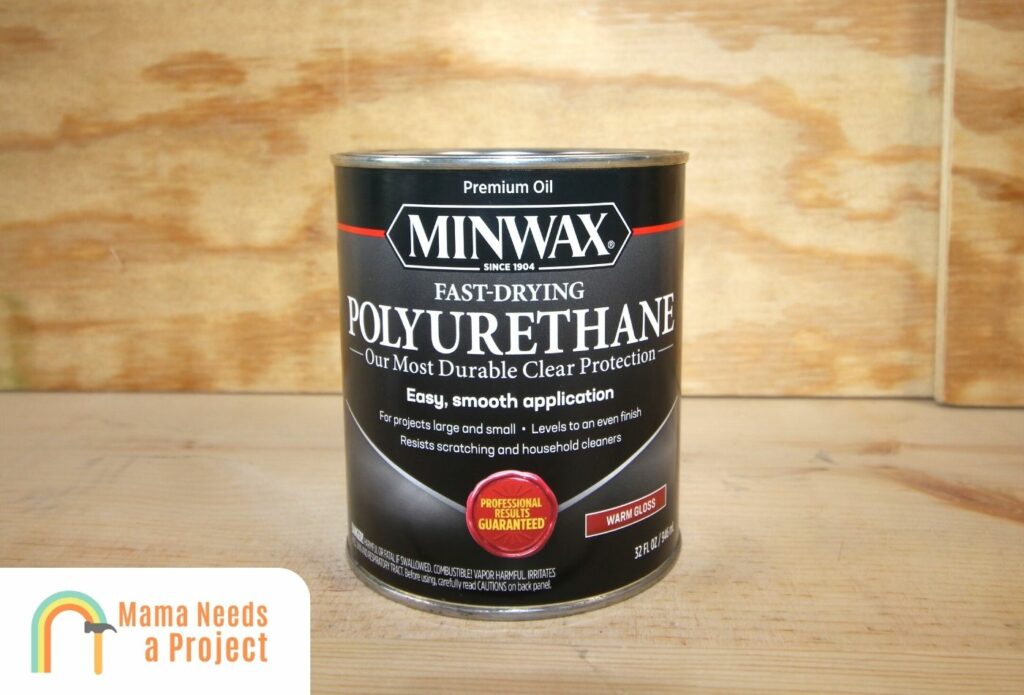
If you have decided to use oil-based polyurethane, there are different rules to follow.
Make sure you are following all the correct tips so that you do not ruin the floor and risk having to redo things.
- After 24 hours of initial application, the wood should not be tacky. You should not walk on it with shoes though and you should not allow pets to run across it.
- Sanding is okay after 24 hours as long as it’s cleaned before applying another coat.
- After 24 hours, you can begin to add additional coats if you choose.
- 48 hours after the last coat, you can wear shoes on the surface.
- Do not place rugs or mats on the floor for at least two weeks.
- The surface should be fully cured for 30 days.
Polyurethane Drying Time Table
Here are some general guidelines on what to expect for drying time. Remember that these exact times might not be the times you experience depending on the factors that are listed above.
You might also want to give the floor an additional 12 hours to dry between coats when the humidity is high or when the weather is cold and rainy.
You can also run the AC if you are in a rush to get the varnish dried. Even if you run the AC though, make sure there are windows open for proper ventilation.
Oil-Based Polyurethane Dry Time
- 24 hour drying time between coats
- Okay to wear shoes after 48 hours
- Do not allow pets for at least 48 hours
- Using pads on furniture legs, you can replace the furniture 4 days
- It should be fully cured in 30 days
- Only light sweep for 2 weeks if you need to clean
Water-Based Polyurethane Dry Time
- 6 hours drying time between coats
- Okay to wear shoes after 24 hours
- Do not allow pets for at least 24 hours
- Using pads on the furniture, you can replace it within 2 days
- It should be fully cured in 30 days
- Only do light sweeping if you need to clean
How can I speed up polyurethane drying time?
It’s best to allow the polyurethane to dry and cure properly to avoid problems and damage in the future.
Though there are many different ways you can speed up the drying time though which will help you finish your project quicker.
First, if you can increase the air temperature in your home, make sure it’s 70 degrees Fahrenheit or higher.
You can also lower the humidity by opening the windows unless the outdoor environment is more humid than the inside of your home.
You can also use a dehumidifier if you want to remove moisture from the air. When you are applying the varnish, especially numerous coats, make sure to make the layers thin.
You also need to make sure you are cleaning the surface as smooth and clean surfaces will dry quicker. There are some types of fast-drying alternative polyurethanes on the market that some people choose to get quick drying times.
Try not to speed up the drying times too quickly because you risk ruining the first coat. If the varnish is taking much longer than advertised to dry, contact the company and explain the problem.
Need some help applying polyurethane? Check out the video below!
How long does it take for water-based polyurethane to dry on hardwood floors?
Most of the time, it takes about 4 hours. You can walk on the floor gently after 4 hours without your shoes. It will take about 30 days for it to fully cure, though. You should also be careful when moving furniture around as you do not want to ruin the surface.
How long does polyurethane take to dry on wood furniture?
If you put the varnish on a hot day and when there is low humidity, it should only take about 2 hours to dry. However, if the weather conditions are not ideal, you will need to add additional drying time.
How long does it take for Minwax polyurethane to dry?
Minwax is a fast-drying alternative that people use when they want to use an oil-based polyurethane. It will dry in just about 2 hours if all the weather and humidity levels are perfect.
How to Remove Polyurethane from Body
To remove polyurethane from your hands or body, you can use soap and water for water-based or mineral spirits for oil-based polyurethane.
FAQs
How long does 2 coats of polyurethane take to dry?
For two coats of polyurethane, it can take anywhere from 24 hours to a few days to dry, depending on the type of polyurethane you use.
How long does it take for polyurethane to harden?
Polyurethane typically takes anywhere from 8 hours a few days to begin hardening once applied. This will depend on the type of poly used and the conditions you’re working in.
Final Thoughts on How Long for Polyurethane to Dry?
The exact drying time of polyurethane will depend on if you are using water-based or oil-based varnish. It will also depend on the weather conditions while you are working. Polyurethane dries quicker on hot and low humid days.
In most cases, it will take between 2 hours and 48 hours to fully dry, but it can take up to 30 days to fully cure.
If you are having trouble with polyurethane drying, consider opening a window or purchasing a dehumidifier. You can also apply thinner layers between each coat.

